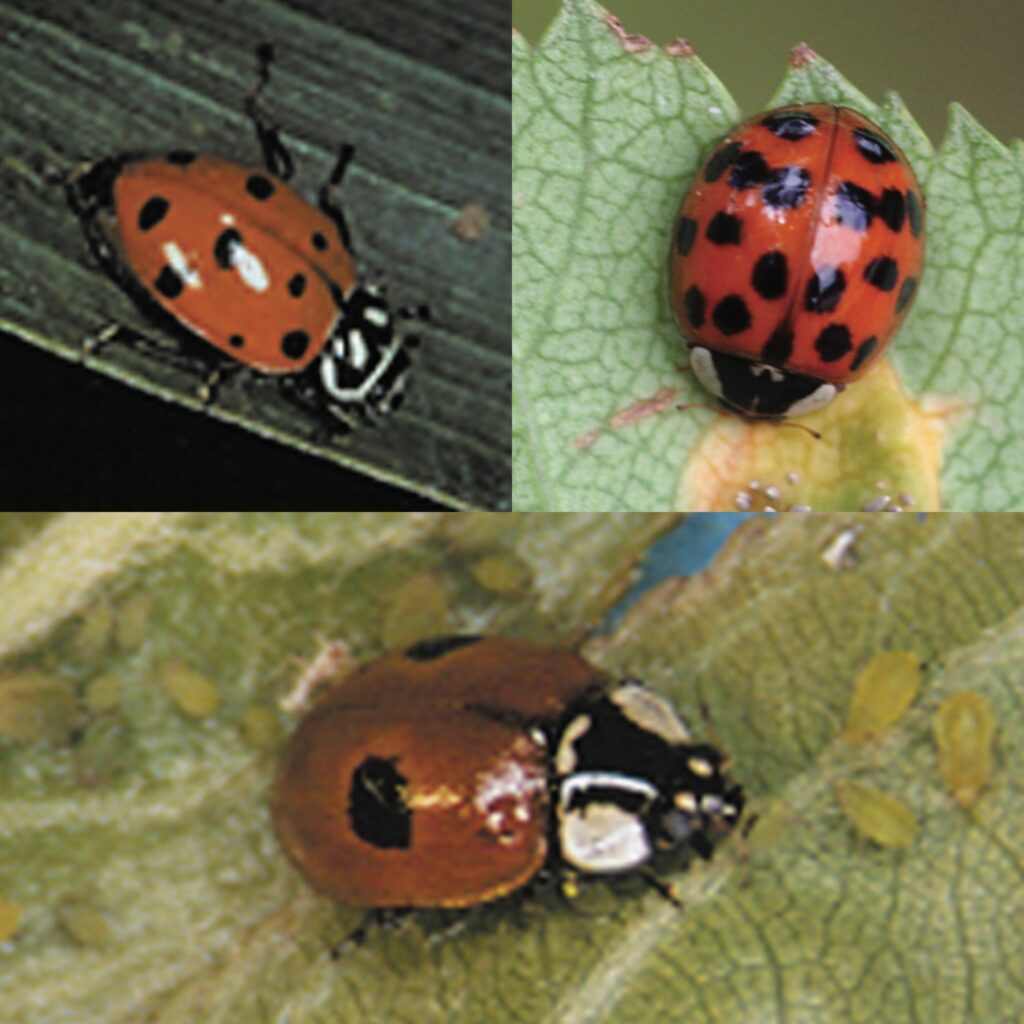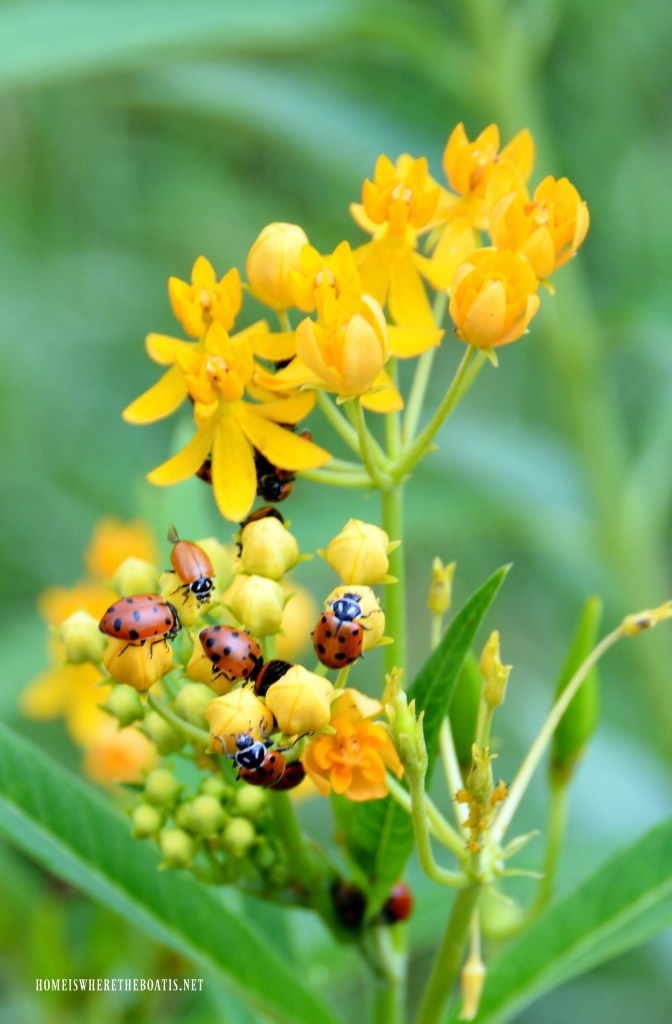Are you delighted when you see a red, round, polka-dotted beetle crawling the stems and leaves of your garden? Not only are they darn cute but they are typically seen as beneficial insects in our native Colorado landscapes.
We typically want lots of ladybugs or lady beetles (correctly, ladybird beetles) in our native plant gardens, as we have heard that they eat aphids and all sorts of other insects we typically view as pests.

Ladybird beetle is the entymologically correct name for what are commonly known as ladybugs in North America and ladybirds in the United Kingdom.
Did you know there are 80 species of lady beetles in Colorado? Seeing netted bags of lady beetles for sale in a local nursery, I consulted with Karim Gharbi, an entomologist and horticulture agent at the Denver County Extension Office to find out the value of buying these insects for my garden.
Simply put, Karim told me, releasing the lady beetles bought at a nursery or other source benefits neither the gardener nor the beetles. The species most frequently sold is the convergent lady beetle, a native insect. However, these beetles are not captively bred. They are harvested from their communal overwintering sites, depleting natural populations. Furthermore, lady beetles tend to disperse far away immediately after release. Besides, there are other insects which are superior to lady beetles in controlling aphids, such as lacewing larvae and myriad parasitic wasps.
Having answered that question, Karim enthusiastically emphasized that native plants are the foundation of the fascinating diversity of life you will find in any of Colorado’s natural areas – and your own garden. A complex interdependence among the organisms you see – and those you don’t – developed over eons of co-evolution. Each plant has its herbivores, each animal has its predators, fitting together like an intricate puzzle, unique to its climate and geography.

Photo from a WOFR Native Plant Garden Tour in Jefferson County (June 2023)
So, when we humans begin intentionally and unintentionally introducing non-native plants and animals, the system can become unbalanced. While exotic species did make their way into new habitats prior to human activity, humans have introduced too many species at rates too fast for many ecosystems to adjust. Everyone is familiar with some horror story or more of introduced organisms! Certainly, some of us pick the invasive Japanese beetle from our gardens every day. In their native ranges, the abundance of plants and animals is determined by predators, climate, habitat availability, and competition, but many of these factors are often absent in places where plants and animals are introduced.
Into our Colorado landscape, the European aesthetic of the manicured lawn and garden was also imported along with the plants that make up those gardens. This creates two problems:
1) Some exotic plants may be less subject to herbivory by native insects because native insects were not evolved to use them. Such exotics may be appealing to some gardeners in part because they may maintain a pristine appearance if they don’t attract native herbivore insects. But without a beneficial relationship between insects and plants of the broad landscape, native wildlife of all kinds that depend on the insects, from the smallest arachnid predators to large songbirds, decline. Such effects ripple throughout the ecosystem in ways we are still learning about.
2) In attempt to maintain the manicured aesthetic, absent from any insect damage, some gardeners resort to tools that harm a wide range of insect species. These attacks disrupt the connection between plants and the rest of the food web. Native plants are usually subject to higher rates of herbivory because the native herbivores of Colorado have evolved to handle the unique combinations of defensive compounds in native plants. So landscaping with native plants that support native invertebrates may look less perfect than the European ideal.
An earlier Wild Ones Front Range newsletter article described how chew holes (not the ravages of Japanese beetles!) can be a good sign of an interdependent ecosystem in your own yard – an aesthetic that is delighted by signs of robust connections between plants and animals. Indeed, I no longer attempt to reduce the aphid population that seems to love parts of my current bush. I’m sure their soft bodies are yummy to other invertebrates and birds. They don’t damage the bush or any other plants. Some leaves just aren’t perfect. Even my ancient plum tree, its upper reaches of leaves skeletonized by Japanese beetles, soldiers on, even if it is decrepit looking.
Back to the lady beetles.

Hippodamia convergens, Convergent lady beetle (top left); Harmonia axyridis, Asian lady beetle (top right); Adalia bipunctata, Twospotted lady beetle (bottom)
It’s not only the commercial harvesting of the native convergent lady beetle that’s not helpful; the imported Asian lady beetle is much worse. The Asian lady beetle was intentionally introduced to control aphids for agriculture. Which they did. But these exotic lady beetles have directly and indirectly afflicted our last native beetles. Native lady beetle species prey almost exclusively on aphids, whereas the Asian lady beetle feeds on aphids, caterpillars, mites, and other beneficial insects. The Asian lady beetles can outcompete our natives by exploiting a wider menu of resources, and eat the native adults, eggs, and larvae. Asian lady beetles come in a variety of colors but the black “M” on their face distinguishes them (as shown in the photo above); feel free to squish them while wearing gloves.
Supporting Native Lady Beetles
According to this Colorado State University Extension fact sheet on lady beetles, you can attract some of the 80 species of lady beetles present in Colorado (such as the Twospotted lady beetle, a common native species marked with two spots on its reddish wing covers) “by providing plants that adults use as nectar/pollen sources, sustaining levels of aphids or other prey, and using insecticides with care.” Asclepias tuberosa is one Colorado native plant that attracts lady beetles, as do all plants with pollen-rich blooms.

You can also help native lady beetles by participating in The Lost Ladybug Project and iNaturalist. These projects seek to document populations of native lady beetle species through observations submitted by nature enthusiasts across the country. If we can find out where our lady beetles have gone, we can try to prevent other native species from declining. Next time you see that cute, round, red, dotted insect in your garden, have a close look – is it an Asian lady beetle or, perhaps, an uncommon native?
This is not a preaching of native purism. Most non-natives are not as damaging as the ones we’ve described. When possible, we do encourage that you select native plants and tolerate some insect damage of your plants, native or exotic. Whether you have a garden solely of native plants, or one like mine where peonies grow next to Apache plume, embrace your love of growing plants. Revel in the diversity of life your horticulture practices support, noticing the variety of organisms you find: daddy long legs, lacewings, tiny jumping spiders and orb-weaver spiders, dragon flies and damsel flies, centipedes and ants, bees and flies, moths and butterflies. And, of course, native lady beetles.
